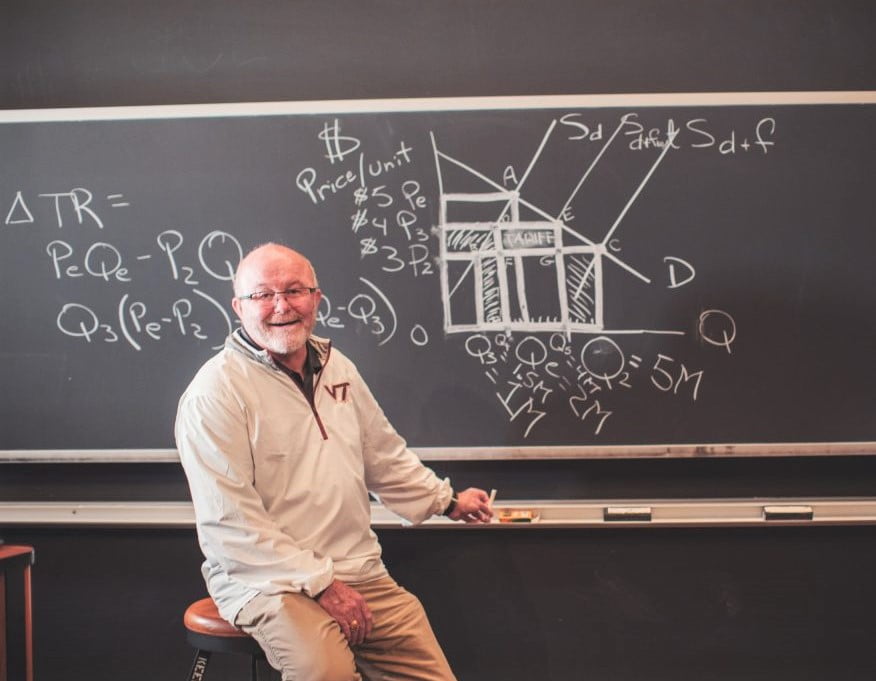
Professor Michael “Mike” Ellerbrock is known to be an engaging and dynamic professor, and the recent switch to online learning hasn’t changed that perception among the 520 students who now join him three times a week over Zoom for live, virtual classes.
Ellerbock teaches macroeconomics to freshmen and sophomores from all across Virginia Tech colleges and environmental sustainability to juniors and seniors within the Virginia Tech College of Agriculture and Life Sciences via Zoom. He continues to hold his students’ interest by incorporating his ideas with fundamental economic lessons through real-life examples that touch on economics, politics, monetary policy, sociology, ethics, and more. Right now, he has a whole new example to work with: the economic havoc visited upon the country by the COVID-19 pandemic.
“In macro, we have discussed how the $2.2 trillion federal assistance program to individuals, businesses, hospitals, and states is an exogenous infusion of funds similar to FDR’s New Deal and Obama’s stimulus package,” said Ellerbrock. He defines exogenous infusion in economic terms as an injection of funds from outside the system. “Elements of the federal stimulus bill also adopt an endogenous approach by changing some existing economic factors within our current system, specifically tax rates. Some payroll taxes, like Social Security, are reduced and income taxes normally due April 15th are delayed.”
While helping students grasp these economic concepts by talking them through parts of the recent stimulus package from his home office in Blacksburg, Ellerbrock also directs his students to consider the political and social implications of the bill.
“This pandemic has already made lawmakers come together,” said Ellerbrock. “By combining internal features usually favored by Republicans and external features usually championed by Democrats, the federal stimulus bill adopts a holistic, bipartisan macroeconomic strategy.”
The magic Ellerbrock brings to his classrooms comes from his ability to connect with his students through classroom discussion, which he has been able to maintain through live Zoom sessions.
“I speak to them as adults and give real-life examples,” said Ellerbrock. “Our class is also discussing the other major dimension of macroeconomics: monetary policy conducted by the Federal Reserve, which has recently lowered interest rates to near zero.”
Without access to a whiteboard at home, Ellerbrock has adapted the way he works out problems and constructs graphs for his online classes by using blank sheets of paper and word documents as he walks students through how to create and solve economic problems. He continues to use real examples and numbers with these problems, most recently providing data so that students can decipher how policymakers calculate appropriate stimulus budgets and delegate how much should be in the form of tax cuts versus direct payments to individuals and households affected economically by the quarantine.
While Ellerbrock hosts “live” class sessions, he also records the sessions and uploads them later to ensure that all students have access to the course content for review or to watch when their new schedules allow.
In a recent correspondence he had with a student thanking him for continuing to teach “live” classes, Ellerbrock responded “classroom and/or ZOOM, I am with you.”
It is this sentiment of solidarity, understanding, and concern that makes Ellerbrock’s teaching so unique and valued among undergraduates. And while students are adjusting to distance learning, classes like Ellerbrock’s are helping them continue to feel connected to their Hokie family while also helping them to make some sense of drastic and unprecedented economic, social, and political changes they’ve experienced recently.
‑Written by Jillian Broadwell


